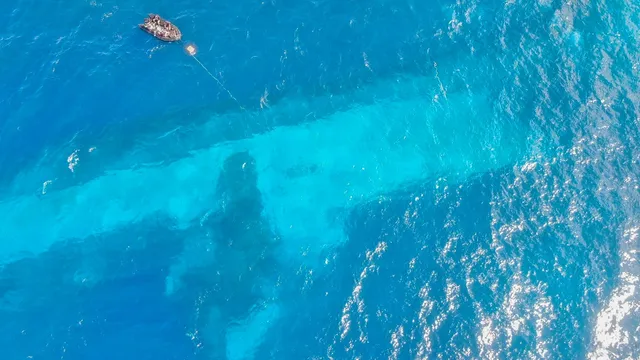
New Zealand navy ship disaster highlights crew's lack of training
2025-04-04 02:10- The HMNZS Manawanui sank off the coast of Samoa, marking New Zealand's first naval loss at sea since World War II.
- An inquiry revealed significant training and experience deficiencies among the crew, leading to operational failures.
- New Zealand's navy faces major challenges and needs a comprehensive overhaul to address systemic issues.
Express your sentiment!
Insights
In October 2024, a New Zealand navy ship named HMNZS Manawanui ran aground and sank off the coast of Samoa, leading to an inquiry that revealed serious deficiencies in the crew's training and experience. This incident marked the first loss of a New Zealand navy vessel at sea since World War II and raised alarms over the condition of the country's military. The inquiry's findings, released in a 120-page report, indicated that the crew did not realize the ship was on autopilot as it headed towards a reef, showcasing a profound misunderstanding of their operational capabilities. The report, released by a military Court of Inquiry, highlighted a total of a dozen failings among the crew, the ship, and New Zealand’s navy. It noted that the navy was under pressure to meet demands with a lean and inexperienced workforce, resulting in significant risks in operating its fleet. Defense Minister Judith Collins described the state of the navy as “perilous” and emphasized that a thorough uplift of the military was required. The New Zealand defense agency has been issuing warnings about the aging military hardware, further pointing to the fragility of the navy as several ships were left idle. An interim report had previously disclosed that the crew attempted to alter the course of the ship while mistakenly believing they were facing technical malfunctions rather than being on autopilot. The concern that arose from this report was compounded by the apparent “hollowness” of the navy, indicating systemic issues that warranted a serious investigation into training practices and operational readiness. Rear Admiral Garin Golding acknowledged the negative impact on the navy's reputation resulting from this incident. Environmental concerns were also raised following the sinking as the ship had been involved in surveying a reef. In response to public outcry from Samoan villagers fearing ecological damage, New Zealand's military worked for months to remove pollutants from the submerged vessel, which remains where it sank. Although a no-fishing zone around the sunken ship was lifted by Samoa’s government, the long-term impact on the marine ecosystem due to the incident continues to be a point of concern. The military authorities have yet to decide whether the ship will be salvaged.
Contexts
The impact of military budget on New Zealand defense capabilities has become a subject of increasing scrutiny as geopolitical tensions rise and the demand for robust national security escalates. As New Zealand navigates its defense landscape, it is essential to assess how the allocation of military budget influences the country's ability to maintain sufficient defense capabilities, protect its sovereignty, and contribute to international security efforts. With a relatively modest defense budget in comparison to its Allies, understanding the strategic priorities and investments is critical to enhancing New Zealand's defense posture in the Pacific region. Historically, New Zealand has focused on strategic partnerships and collective security arrangements, particularly through alliances like ANZUS and participation in UN peacekeeping missions. This approach necessitates a military budget that not only sustains existing forces but also enables adaptive capabilities to respond to emerging threats. In recent years, budgetary allocations have aimed at modernizing the New Zealand Defense Force (NZDF) by investing in new technologies, equipment, and infrastructure. However, challenges such as resource constraints and competing budget priorities must be addressed to ensure that these modernization efforts translate into tangible improvements in operational effectiveness. Analysis of recent budget trends indicates a shift towards enhancing military readiness and responsiveness. Increasing investments in naval assets, air capabilities, and cyber defense reflect a strategic pivot to address regional security challenges. The emphasis on maritime security, particularly in response to China's growing influence in the Pacific, underscores the necessity for New Zealand to bolster its operational capacity. Nevertheless, the adequacy of the military budget remains a contentious issue, with calls from defense analysts and policymakers for increased spending to achieve a more comprehensive defense strategy that meets contemporary security demands without compromising other essential national priorities. To conclude, the impact of military budget on New Zealand's defense capabilities is multifaceted, shaping the country's strategic direction amidst evolving regional dynamics. It is essential for policymakers to continuously evaluate the effectiveness of budget allocations in enhancing the NZDF's readiness and resilience. A comprehensive understanding of the interplay between budgetary commitments and defense requirements is critical for ensuring that New Zealand not only protects its national interests but also contributes meaningfully to regional and global security efforts.